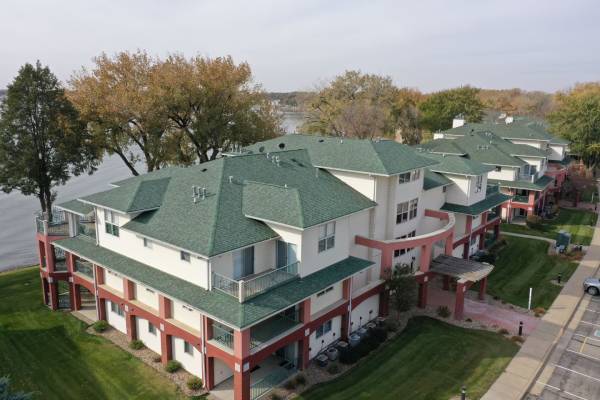Choosing between roof overlay vs. tear off affects the lifespan, cost, and performance of your home’s roofing system. Some homeowners look for the fastest and most affordable solution. Meanwhile, others focus on long-term durability.
The right decision depends on the existing roof condition, local regulations, and future maintenance needs. Mistakes in selection can lead to higher expenses and potential structural issues. A careful comparison helps in making the best investment.
Explore the key differences between these two roofing options.
Understanding Roof Overlay vs. Tear Off
Roof overlay adds a new layer of shingles over the existing roof without removing the old materials. This method speeds up installation, reduces labor costs, and minimizes waste. Many homeowners choose an overlay to refresh their roof’s appearance while avoiding the hassle of a complete replacement.
However, this option works best when the existing roof is in good condition, without water damage, soft spots, or excessive wear. Covering up underlying issues can lead to bigger problems later.
A tear off removes all existing shingles–exposing the roof deck for inspection and repair. This option eliminates the risk of hiding damage and guarantees a solid foundation for new materials. Tear off roofing provides better long-term performance and allows for improved insulation and ventilation. Though the upfront cost is higher, it increases the home’s value and prevents expensive repairs down the line.
Comparing Costs Between Both Roofing Options
Roof overlays cost less because they require fewer materials and less labor. Homeowners save on removal fees, landfill charges, and disposal costs. The reduced work time also means less disruption to daily life.
However, future repairs may become more expensive if hidden damage worsens under the new layer. Additional weight can also shorten the lifespan of the overlay. This might lead to earlier replacement needs.
Tear off roofing requires a larger investment. Nevertheless, it eliminates risks associated with covering up problems. The cost includes removing the old shingles, checking the roof deck, and installing a new system. While this increases expenses upfront, it prevents future repair costs. A tear off also extends the life of the new roof. This makes it the better long-term investment for homeowners planning to stay in their homes for years.
Evaluating Longevity and Durability Differences
A roof overlay wears out faster because it depends on the existing shingles for support. The added weight puts more stress on the structure and leads to premature aging. Heat retention also becomes an issue, as old and new shingles trap heat–causing faster deterioration. Overlays may last 10 to 15 years. However, their lifespan shortens if the underlying roof is already weak.
Tear off roofing offers better durability because it starts with a clean surface. New shingles adhere properly without underlying issues affecting performance. Proper ventilation reduces moisture buildup and prevents mold and rot. A tear off roof lasts 20 to 30 years or more–depending on the material and maintenance. Homeowners looking for a long-term solution benefit more from this method.
Considering the Structural Weight Concerns
Adding a new layer of shingles increases the overall weight of the roof structure. Homes built decades ago may not handle the extra load, especially if previous repairs weakened the frame. Too much weight can lead to sagging, leaks, or even structural failure in extreme cases. Before choosing an overlay, an inspection assures the home can support the added materials.
Tear off roofing removes old materials and keeps the roof’s weight balanced. This option prevents stress on the structure and maintains proper load distribution. It also allows for upgrades, such as stronger underlayment or additional insulation. Homes in areas with heavy snowfall benefit from a tear off since excessive weight can lead to dangerous collapses during winter.
Impact of Weather on Roofing Decisions
Roofs in climates with extreme weather face different challenges. Overlays may work in mild regions where heavy rain, snow, or high winds are rare.
Nevertheless, in areas with frequent storms, strong winds can lift the second layer of shingles. Ice dams and trapped moisture also cause faster deterioration. The existing shingles may already have weaknesses, which worsen under an overlay.
Tear off roofing offers better weather protection because it starts fresh. New materials perform at their best without old damage affecting their strength. Proper sealing prevents leaks, and improved ventilation stops moisture buildup. Homeowners in areas with harsh winters, heavy rain, or strong winds benefit from a complete replacement over an overlay.
Checking Local Building Codes and Rules
Some areas limit the number of roofing layers allowed. Many building codes restrict homes from having more than two layers due to weight concerns. Homeowners must check local regulations before considering an overlay. If the roof already has multiple layers, a tear off becomes the only option. Ignoring these rules can lead to fines, insurance issues, or complications when selling the home.
Tear off roofing meets all legal requirements because it replaces the entire system. This assures compliance with building codes and avoids future problems with inspections. Some municipalities also offer incentives for complete replacements, especially if energy-efficient materials are used. Checking local laws before starting a roofing project prevents costly mistakes.
How Roofing Materials Affect Replacement Choice
Different roofing materials influence whether an overlay or tear off works best. Asphalt shingles allow for overlays. However, metal, slate, or tile roofing often require full removal before new installation. The type of shingles also affects durability. Standard three-tab shingles wear out faster when layered. Meanwhiles, architectural shingles may hold up better.
Tear off roofing provides more flexibility in material choices. Homeowners can upgrade to stronger, more energy-efficient options without limitations. This also allows for improvements in insulation, ventilation, and underlayment. Choosing the right materials assures better performance and longer lifespan. This makes a tear off a better long-term investment for many homeowners.
Influence of Home Age on Roofing Decisions
Older homes often have structural limitations that affect roofing choices. Many were built with materials and designs that may not support the added weight of an overlay.
Roof decks in older homes may have weakened over time due to moisture exposure, previous repairs, or outdated construction methods. Placing a second layer of shingles over an aging structure increases the risk of sagging, leaks, and long-term damage. Inspecting the existing framework makes sure it can handle an overlay without future complications.
A tear off is usually the better option for older homes because it allows for a full structural assessment. Removing the old roofing materials exposes any hidden issues, such as rotting wood, deteriorated flashing, or inadequate ventilation.
Energy Efficiency Differences Between Both Options
Roofing decisions impact home energy efficiency by affecting ventilation, insulation, and heat retention. Overlays trap more heat because two layers of shingles absorb and hold warmth from the sun. This can increase cooling costs in warm climates. This makes it harder to maintain indoor comfort.
Without proper ventilation, moisture can also become trapped between the layers and lead to mold growth and reduced insulation effectiveness. An overlay limits the ability to improve energy efficiency without additional modifications.
A tear off brings better energy efficiency by allowing a fresh start with upgraded materials. Removing the old roof enables the installation of energy-efficient shingles, improved ventilation systems, and modern underlayment designed to reflect heat.
Homes with a tear off replacement benefit from better temperature regulation. This will reduce the need for excessive heating or cooling. This leads to lower energy bills and improved indoor comfort. Therefore, it’s a more cost-effective option in the long run.
Required Maintenance for Each Roofing Method
Maintaining an overlay roof requires extra attention due to the added layer of shingles. Water can become trapped between the layers. This will increase the risk of mold, leaks, and shingle deterioration. Regular inspections are necessary to detect soft spots or areas where moisture builds up. If repairs become necessary, fixing an overlay can be more complex and expensive since two layers need to be addressed.
A tear off roof requires less frequent maintenance because it starts with a new, properly installed system. New shingles are more resistant to weather damage, and ventilation improvements reduce moisture-related issues.
Routine inspections and minor upkeep, such as cleaning gutters and checking for missing shingles, help extend the lifespan of a tear off roof. Homeowners looking for a low-maintenance roofing solution benefit more from a full replacement.
Signs That Indicate a Tear Off Is Needed
Multiple Leaks
Water stains on ceilings, damp insulation, or mold growth indicate moisture is seeping through multiple areas. Patching individual leaks may work temporarily. However, if they appear in different spots, the entire roof is compromised. A tear off allows for a full inspection and prevents ongoing water damage.
Sagging Roof Deck
A roof that dips between rafters or feels soft underfoot suggests structural weakness. Layers of trapped moisture rot the wood over time and make an overlay ineffective. A tear off removes damaged materials and restores the roof deck’s strength before installing new shingles.
Shingles Peeling or Curling
Warped, curling, or missing shingles mean the roof has reached the end of its lifespan. Adding another layer will not fix the underlying deterioration. A tear off assures proper shingle adhesion and prevents premature failure.
Excessive Granule Loss
Shingles shed protective granules as they age. This makes them brittle and less effective. If gutters fill with granules or bald spots appear, a tear off is the best option. New shingles deliver better durability, protection, and weather resistance.
Choosing a Trusted Roofer for Installation
Licensed and Insured
A reputable contractor holds proper licensing and carries insurance for liability and worker protection. Hiring an unlicensed roofer risks substandard work, fines, and denied insurance claims. Verifying credentials guarantees compliance with building codes.
Proven Experience
Years of hands-on work in the industry demonstrate a contractor’s ability to handle different roofing challenges. Checking past projects and customer reviews confirms reliability. Experienced roofers understand the best materials and installation techniques for long-lasting results.
Detailed Written Estimates
A trustworthy roofer provides a clear breakdown of costs, materials, and timelines. Vague pricing or verbal agreements can lead to unexpected charges. A written estimate assures transparency and helps homeowners budget accurately.
Choose Tear Off Roofing in Sioux Falls with Harveys Five Star Roofing
A strong, reliable roof protects your home from the harshest elements. When it’s time for a replacement, making the right choice matters. Our tear off roofing in Sioux Falls services remove worn-out materials. This gives your home a fresh, long-lasting roof built to handle every season.
As trusted roofing contractors in Sioux Falls, we deliver expert craftsmanship with fast turnaround times. We make sure that your new roof meets the highest standards. Harveys Five Star Roofing provides top-tier solutions tailored to your budget, so you get a high-quality upgrade without unnecessary delays.
Call us today and let’s get your roofing project started!









